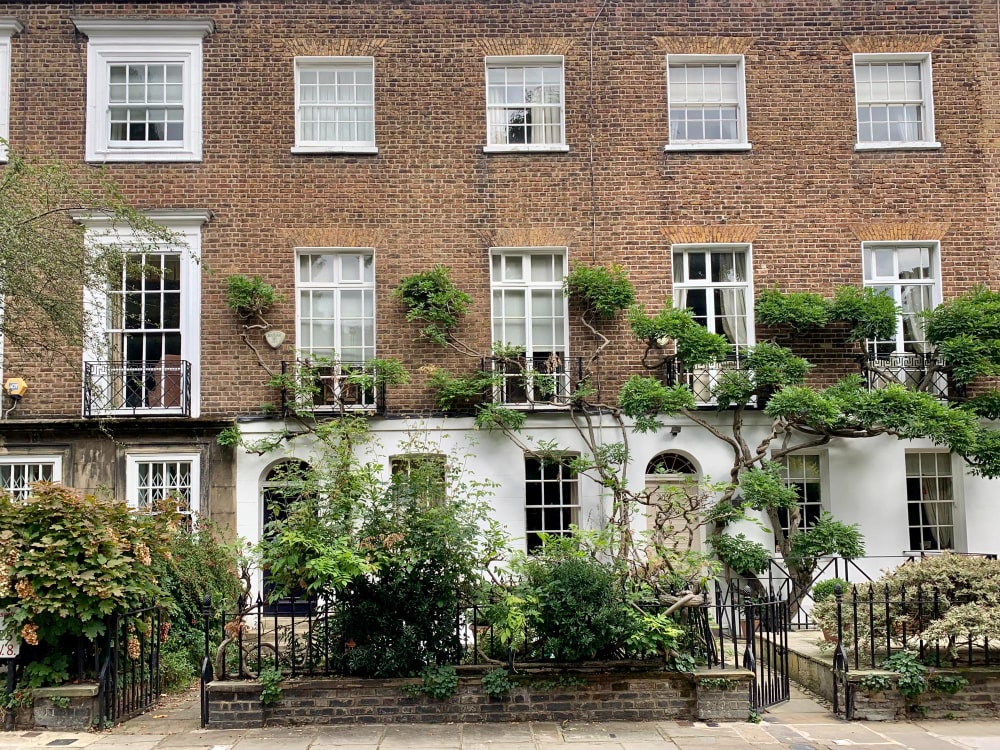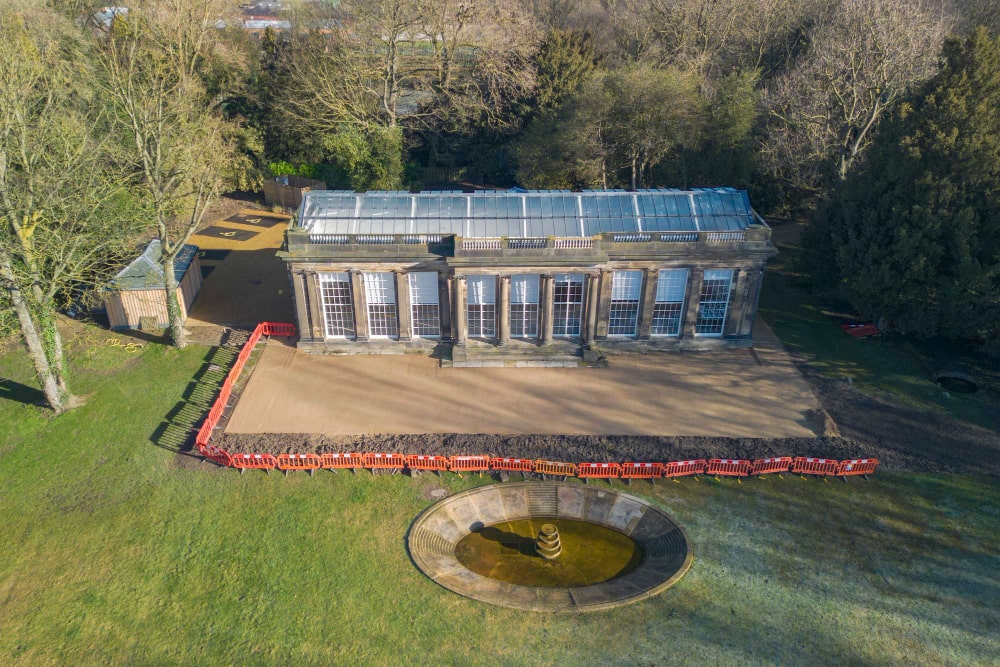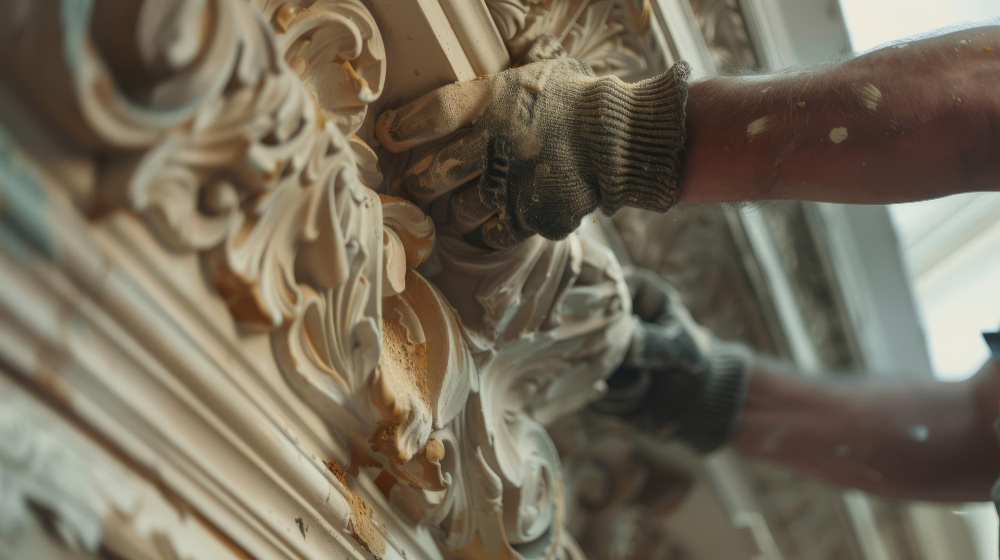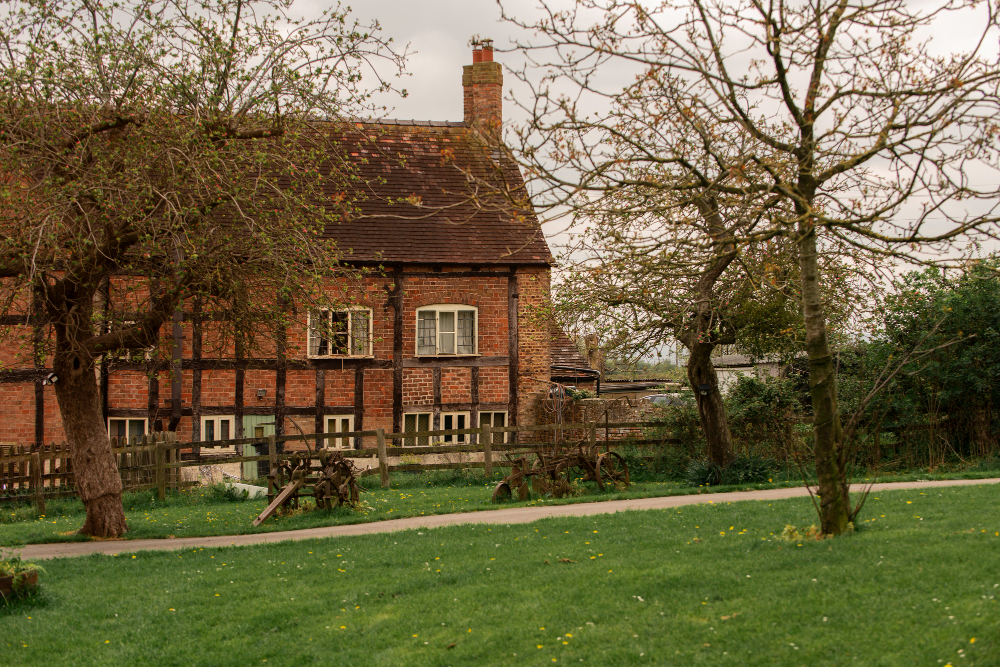
Guide to Listed Building Restoration in the UK
A listed building is a living record in brick and stone; a living monument to our connection to the past. Across the UK, rules apply to almost every change. This guide explains how Listed Building Consent works in England, Wales, Scotland and Northern Ireland, the repair principles that matter, what drives cost, and how to maintain fabric over time so future generations can enjoy it.
If you need cover during works, rivr can insure listed homes up to £3 million for reinstatement in the same form, style and condition within policy limits.
Understanding listed status
Listed buildings are protected for their special architectural or historic interest. The list entry explains why the building is significant and what contributes to that significance.
Across the UK, designations signal national importance: England and Wales use Grades I, II* and II; Scotland uses Categories A, B and C; Northern Ireland grades A to B2. Grade II is the most common for private houses, with heightened scrutiny at Grade II* and Grade I.
For a Grade II listed building, scrutiny still applies, but proportionate repairs and like-for-like methods are often acceptable with clear justification.
Grades explained

The percentages below relate to England.
Grade I denotes buildings of exceptional interest. Grade II* identifies particularly important buildings of more than special interest. Grade II marks buildings of special interest that warrant efforts to preserve.
Typical proportions and significance:
- Grade I: about 2.5 percent of listed buildings. Highest national significance.
- Grade II*: about 5.8 percent. Particularly important.
- Grade II: about 91.7 percent. Most homeowner cases.
How to check a listing
- Use your nation’s official register to find the entry, map, and description.
- Read what contributes to significance and note any interior features named.
- Check curtilage under the 1 July 1948 rule for structures within the land attached to the principal building. Terminology varies by nation.
- Confirm scope in writing with your local planning department’s conservation officer and ask what evidence they expect.
Registers:
- England: National Heritage List for England
- Scotland: Historic Environment Scotland portal
- Wales: Cadw Cof Cymru database
- Northern Ireland: DfC Historic Environment Record
Tip: Open-data mapping layers help you spot walls, outbuildings, and steps within the site that may be treated as part of the listing.
Legal framework and permissions
Listed building law regulates alteration, extension and demolition across the UK; each nation determines applications under its own Act.
- England and Wales: Planning (Listed Buildings and Conservation Areas) Act 1990
- Scotland: Planning (Listed Buildings and Conservation Areas) (Scotland) Act 1997
- Northern Ireland: Planning Act (Northern Ireland) 2011
Most works that affect a building’s special interest require Listed Building Consent. Consent sits alongside planning permission where development is involved. Unauthorised works, or breach of an LBC condition, is a criminal offence under the relevant Act.
Apply through your nation’s route. In Scotland, Wales and Northern Ireland the relevant local authority determines consent. Listed status does not remove Building Regulations duties.
Note: Unauthorised works can lead to reinstatement requirements and prosecution. Breaching LBC conditions is also an offence under section 9 of the Act.
How to prepare for restoration
.png)
- Research significance and fabric. Read the listing entry. Identify what contributes to character, where later additions occur, and how history shapes today’s plan.
- Engage a conservation architect and heritage consultant. They can establish significance, create a statement of heritage impact, and define a repair philosophy.
- Book a pre-application meeting with the conservation officer to test ideas and confirm what listed building consent and planning approval will cover.
- Assemble application material. Include drawings, method statements, materials schedules, and a photographic record for the listing file.
- Programme surveys. Commission timber, damp-salt, roof, and structural inspections so proposals can be carried forward with evidence.
Choosing contractors and materials
Restoring listed buildings is a specialist task. Owners benefit from contractors who understand breathability, vapour movement, and reversible interventions. Traditional materials reduce the risk of trapping moisture in walls or brickwork. A general builder may be competent, but the project should be carried by people who can evidence conservation training and relevant casework.
Use a palette that respects historic fabric and avoids hard, impermeable finishes that conflict with the original performance of the building. The Society for the Protection of Ancient Buildings notes that traditional mortars, plasters, renders, and paints should be relatively permeable so moisture can evaporate.
Recommended techniques and materials:
- Lime mortar for bedding and pointing compatible brickwork.
- Breathable renders and lime plaster for internal and external walls.
- Timber repair methods such as splicing to preserve more original fabric.
The core principles of repair

Aim to preserve as much original fabric as possible. Minimum intervention reduces risk and cost while protecting authenticity and life expectancy. Like-for-like repair should match materials, detail, and workmanship so the listing remains legible.
Reversibility is encouraged where feasible, especially for services and insulation, so future work can be carried out without loss. Remember to keep a clear record of decisions, samples, and test panels to support the listing file and future maintenance. These principles apply across Grades, from a Grade I landmark to a Grade II family house, and help owners remain responsible custodians.
Insurance and costs
Listed building renovation often carries higher risk and specialist labour, which can result in high costs compared to standard building renovation. Ensure your property insurance acknowledges declared works and that sums insured reflect the real cost of repair and restoration to listed standards. Seek impartial advice if you are unsure about scope or exclusions. Unauthorised works can invalidate assumptions and create liability under the Act.
Common challenges and solutions
- Damp, salts, and trapped moisture in walls. Use breathable materials, manage ventilation, and avoid impermeable gypsum or cement to preserve fabric.
- Structural movement at openings or roof junctions. Engineer-led, minimum intervention repair with stitching or discreet tying, sized for the building.
- Hidden services in historic buildings. Route carefully with few chases, surface-mount where acceptable, and create records for the listing.
- Lead roofs and gutters at end of life. Replace on a like-for-like basis by accredited specialists and document details for consent discharge.
- Windows that are draughty or decayed. Prioritise repair, draught-proofing, and secondary glazing before replacing.
- Curtilage features such as boundary walls and steps. Treat as part of the listing and plan repair with the conservation officer.
Permissions beyond the building
In England and Wales, curtilage structures built before 1 July 1948 that were historically associated with and in the same ownership as the principal building are treated as part of the listing; definitions vary in devolved policy. Tree controls apply UK-wide but processes differ by nation. Check your authority’s conservation area or TPO process before works
Case studies

Example 1: Brick cottage, Grade II
Aim: Return a 19th century house to former glory while adding a modern kitchen and improving roof drainage.
Constraint: Preserve plan form and retain the stair, doors, and joinery identified in the list entry.
Solution: Lime plaster repairs, timber window overhaul, secondary glazing, and a new lead gutter set to match existing falls.
Outcome: Character retained, damp reduced, and services routed discreetly without loss of original fabric.
Example 2: City townhouse, Grade II*
Aim: Improve thermal comfort, fire safety, and interior layout with minimal loss of historic fabric.
Constraint: Stair compartment and principal rooms were key to significance.
Solution: Reversible insulation, undersized chases for wiring, and careful wall repairs where lath and plaster were retained.
Outcome: Conditions discharged quickly because methods matched approvals and were recorded in detail.
Maintenance and long-term care
Use this maintenance checklist to prevent fabric decay, reduce failures, and protect significance:
- Inspect the roof, chimneys, flashings, and rainwater goods annually and after storms.
- Balance ventilation and heating to avoid condensation and salts that shorten component life.
- Control vegetation against walls, steps, and boundary structures to protect brickwork and stone.
- Limewash or redecorate on cycles suited to materials and exposure, with samples retained.
- Update your logbook with photos, drawings, and notes so future owners can maintain the listing.
Final checklist
Resources
- Historic England website and The List: policy notes, technical advice, and the national register.
https://historicengland.org.uk/advice/ • https://historicengland.org.uk/listing/the-list/ - Historic Environment Scotland portal: search designations and download list entries.
https://portal.historicenvironment.scot/search - Cadw Cof Cymru database: Wales’s register of listed buildings and scheduled monuments.
https://cadw.gov.wales/advice-support/cof-cymru/search-cadw-records - DfC Historic Environment Record (Northern Ireland): HERoNI search and guidance.
https://www.communities-ni.gov.uk/topics/historic-environment-record-northern-ireland-heroni - Local authority conservation pages: nation-specific LBC guidance and contacts.
- SPAB advice for old buildings: practical technical notes on breathable materials and repair.
https://www.spab.org.uk/advice
rivr: Tailored cover for high value homes

rivr is a high-value, digital-first home insurer built for modern needs. Our listed building insurance covers reinstatement in the same form, style and condition. We cover professional fees and compliance costs within limits, insure all UK grades, provide up to 36 months of alternative accommodation, and offer a survey-backed rebuild guarantee on eligible grades when valued by a rivr-authorised chartered surveyor.
Get in touch to align your policy with your next phase of works.
Read more
Frequently asked questions
Often, yes, if you value authenticity and long-term stewardship. Benefits include cultural value, durable materials, and strong sense of place. Trade-offs include consent complexity, longer programmes, specialist costs, and limits on some energy upgrades. Run due diligence, secure funding, and plan phasing before you commit.
It does not apply. The planning “4-year” or “10-year” immunity rules relate to planning breaches, not listed works. Unauthorised works to a listed building, or breach of a consent condition, are criminal offences and can be pursued without time limits.
Yes, with care. You need Listed Building Consent for any work that affects the building’s special interest, inside or out. Like-for-like repairs may not need consent, but get written confirmation from the local planning authority. Building Regulations still apply. Engage a conservation architect early and keep a works log with photos and methods.
It varies by grade, condition, scope, and materials. Expect higher costs than a modern refurb due to specialist trades, access, and traditional materials. Typical allowances include professional fees of roughly 15–25% of build cost and a contingency of at least 15–20% for discoveries. A pre-construction survey and trial repairs reduce risk.
An RCA is a chartered surveyor’s estimate of the full rebuild cost for insurance. It reflects traditional methods, heritage features, professional fees, debris removal, and compliance with consent conditions. For listed homes, use a surveyor with conservation expertise. Review at least every 3–5 years, and after significant works.
- Confirm listing, curtilage, and significance.
- Commission surveys for structure, roof, damp and salts, and services.
- Agree a repair philosophy based on minimum intervention and like-for-like methods.
- Pre-app with the conservation officer.
- Prepare drawings, method statements, and samples, then apply for consent.
- Tender to specialist contractors.
- Record methods and materials during works and discharge conditions.
- Set a maintenance plan and update the logbook.


.jpg)


